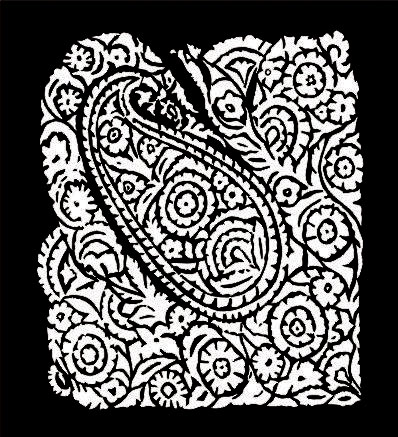Publications
A collectable book and folder will be available at the venue.

Jamdani is one of the finest Muslin textiles in Bengal, a proud heritage of the weavers of Sonargaon, Rupganj and Siddhirganj in the Narayanganj district. Unlike the techniques used for embroidery or prints, Jamdanis are woven directly on the loom using the weft technique. Its designs are unique and delicate, and are suggestive of floral motifs. It is a technique that has traditionally been handed down from generation to generation through oral instructions from master to apprentice.
The industry experienced a gradual decline since the mid-19th century, during the British colonial period. The fall of the Mughal Empire deprived artisans of their most influential patrons, and the use of machinery in the English textile industry, as well as the subsequent import of lower quality, but cheaper yarn from Europe, amongst numerous other factors, contributed to a steady decline.
The resurgence of Jamdanis began in the 1980s. It was primarily due to the effort of Bangladesh Small and Cottage Industries Corporation (BSCIC), a number of craft development organisations, NGOs and individuals, who supported artisans with access to credit facilities, raw materials and marketing.
Research and documentation from museums and private collections also made it possible for weavers to replicate original designs and layouts with great success. Several non-government agencies have organised exhibitions in Dhaka, Delhi and London to promote handlooms and crafts. The first such exhibition, after independence of Bangladesh, was organised in 1974 by a few enterprising individuals led by Shilpacharya Zainul Abedin. The purpose was to expose Bangladesh’s folk cultural heritage to consumers and designers. It led to the establishment of several craft organisations and boutiques in Dhaka and other cities. BSCIC holds periodic textile exhibitions where Jamdanis are displayed. Two exhibitions organised by Aarong in 1981 and 2010 demonstrated the wide variety of designs that were woven on very simple pit looms. Muslin Festival, in 2016, exhibited the original hand-spun Muslin Jamdani after a gap of several decades.
Fine Jamdani fabrics were also exhibited at a number of international exhibitions. In 1979 the Arts of Bengal exhibition showing the heritage of Bangladesh and Eastern India were displayed at the Whitechapel Art Gallery in East London. Later the National Crafts Council partnered with the Commonwealth Institute, London to celebrate the latter’s Silver Jubilee in 1987. The White Chapel Art Gallery organised an exhibition of hand woven Jamdanis and kanthas in 1988. Its catalogue entitled Woven Air illustrated a wide variety of designs. Since the Gallery was located in East London, it was an opportunity for residents – many of whom were migrants from Bangladesh – to see the fabrics which had been made in Bangladesh.
Exhibitions, in recent times, have helped raise awareness about the rare skill and creativity of Bangladeshi weavers leading to a greater demand for fine Jamdani sarees around the globe.
In an attempt to restore the Jamdani to its original excellence, the National Crafts Council of Bangladesh and Bengal Foundation have jointly organised the Jamdani Festival, a celebration of the proud heritage of Jamdani weaving in Bangladesh.
Partnering with Aarong, Aranya, Kumudini and Tangail Saree Kutir – four of the biggest organisations in the country working with crafts, the Festival is exhibiting reproductions of century old Jamdani designs, as well as original antique garments, which have been collected from museums, historical records and private collections from Bangladesh and abroad.
The Jamdani Festival 2019 will feature a seminar discussing the past, present and future of Jamdani; screening of four short documentary films exploring the designs, process of weaving and the life of a weaver, and live demonstrations by weavers at the venue.
The Festival will also host the prestigious Master Craftspersons Award ceremony on the day of its inauguration. The award in 2019 will be presented to four of the most gifted Jamdani weavers and apprentices for their skills, creativity and contribution to the community.
This publication encapsulates the research undertaken by the National Crafts Council of Bangladesh over the past two years to trace traditional Jamdani designs . It explores the rich cultural heritage of Jamdani weaving, the skills shared by Bangladeshi weavers, and the significance of the geographical and ecological context of Narayanganj. We have carefully documented and featured number of our reproductions, as well as century-old antique garments, in great detail. We hope this book will inspire and aid in the future research on Jamdani weaving.
First published in Bangladesh in September 2019
Bengal Publications Limited
House 42, Road 16, Sheikh Kamal Sarani
Dhanmondi, Dhaka 1209, Bangladesh
www.bengalpublications.com
© 2019 Bengal Publications Ltd.
All rights reserved. This book is sold subject to the condition that it shall not, by way of trade or otherwise, be lent, re-sold, hired out or otherwise circulated in any form of binding or cover other than that which it is published and without a similar condition including this condition being imposed on the subsequent purchaser.
Publisher
Abul Khair
Editorial Panel
Ruby Ghuznavi, Hameeda Hossain, Chandra Shekhar Shaha, Luva Nahid Choudhury, Estambul Hoque, Tanzim Ibn Wahab
Assistant Editor
Shah Nahian
Content Development Team
Farina Noireet, Maleeha Mazen Khan
Art Direction and Typography
Akram Ratan
Layout & Design
Emon Obaidullah, Syead Iqbal Hossain
Graphics . Md. Shamim Islam
Photography
Abu Naser, Afzalur Rahman Xelon, Hadi Uddin, Kazi Anisul Haque Borun, Md. Rabiul Islam, Nurun Nahar Nargis, Rasel Chowdhury
Printing
Progressive Printers Pvt. Limited, Dhaka
Printed and bound in Bangladesh

